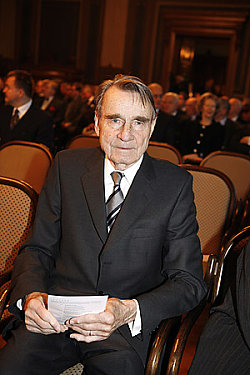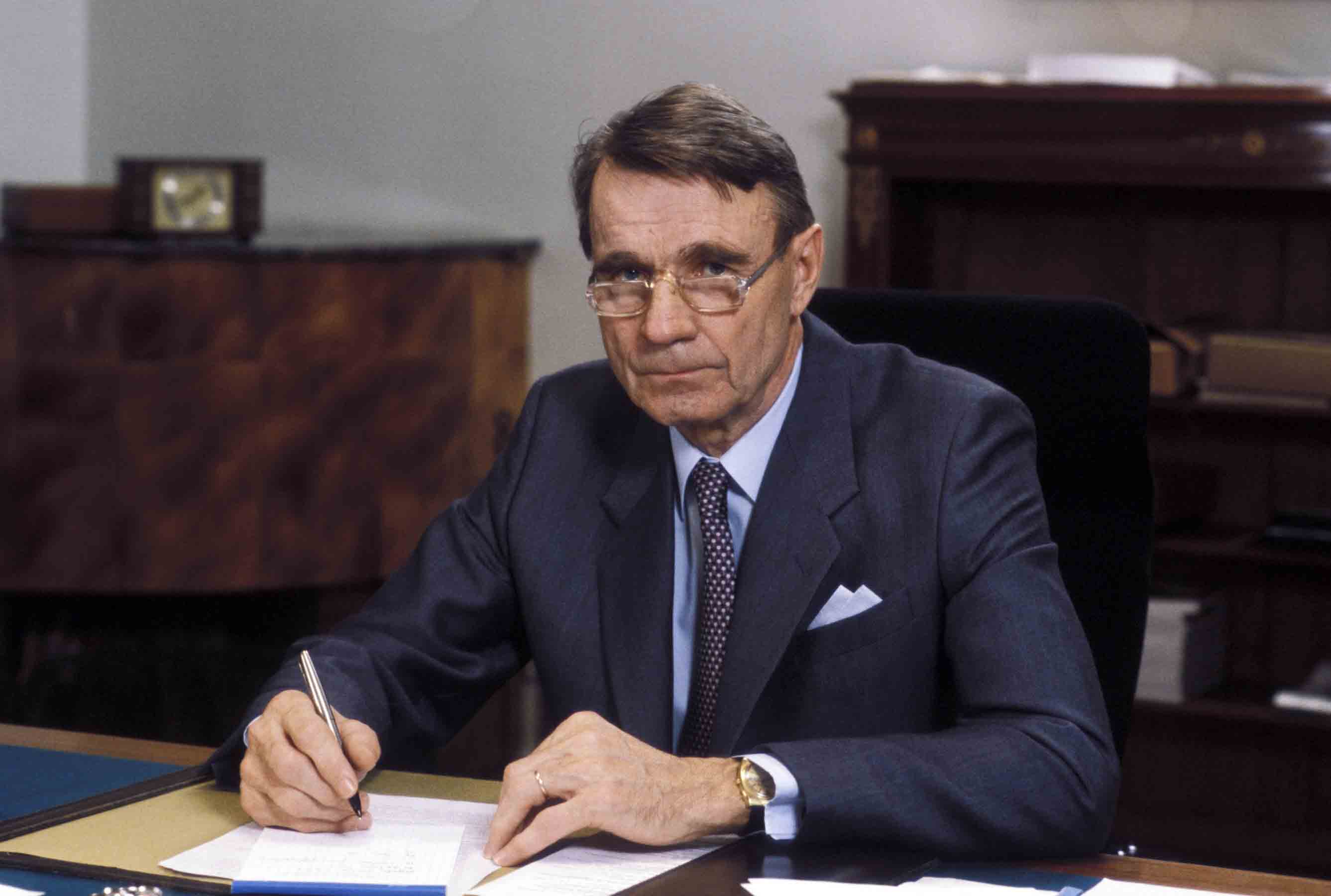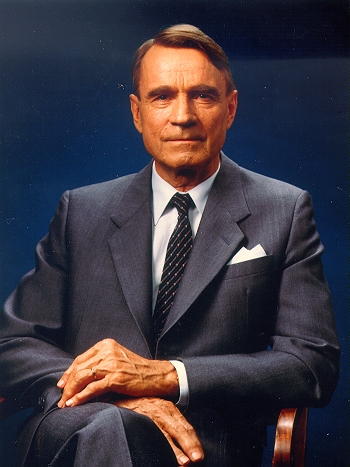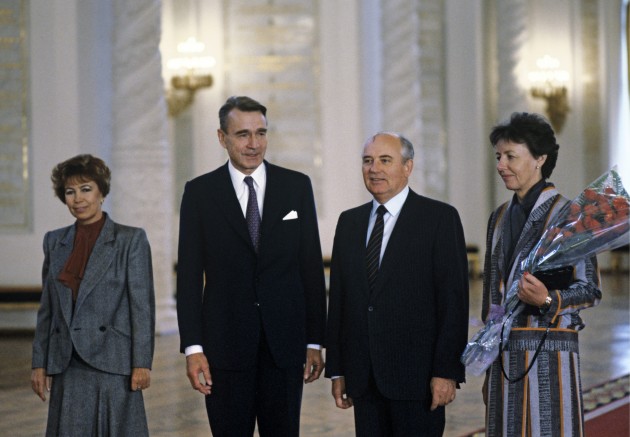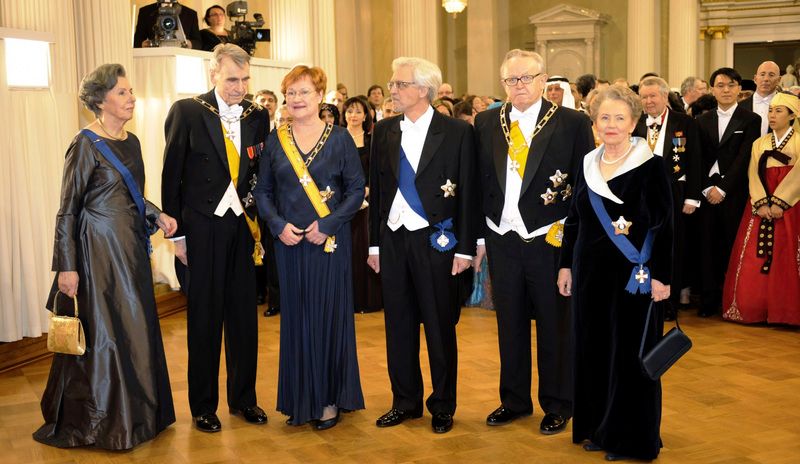<Back to Index>
- Confucian Scholar Yi Hwang, 1501
- Composer Johann Friedrich Reichardt, 1752
- 9th President of Finland Mauno Henrik Koivisto, 1923
PAGE SPONSOR
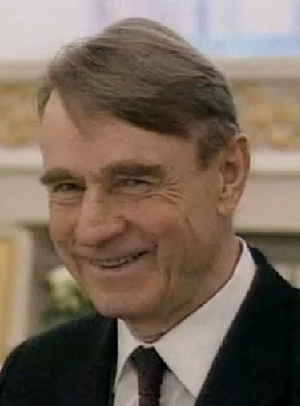
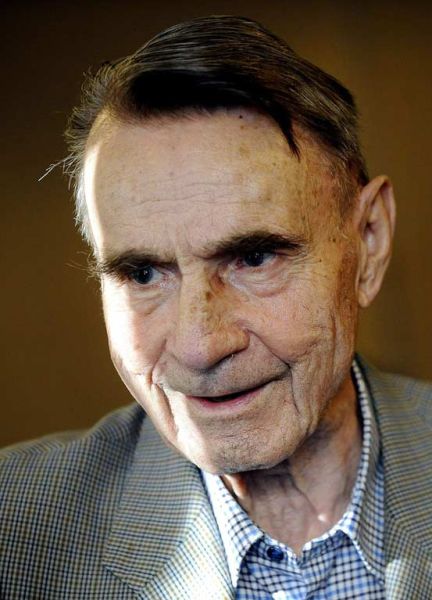
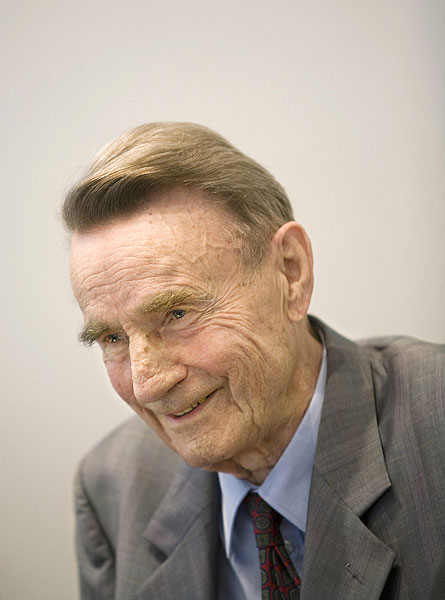
Mauno Henrik Koivisto (born November 25, 1923) is a Finnish politician who served as the ninth President of Finland from 1982 to 1994. He also served as Prime Minister 1968 – 1970 and 1979 – 1982. He was the first Social Democrat to be elected as President.
Koivisto was born in Turku, Finland, the second son of Juho Koivisto, a carpenter at Crichton - Vulcan shipyard, and Hymni Sofia Eskola, who died when he was 10. After attending primary school, Koivisto had a number of jobs, and at the beginning of the Winter War in 1939, when he was 16, he joined a field firefighting unit. During the Continuation War, Koivisto served in the Infantry Detachment Törni, led by the famous Lauri Törni, which was a reconnaissance detachment operating behind the enemy lines and open to selected volunteers only. During the war he received the Order of the Cross of Liberty (2nd class) and was promoted to the rank of lance corporal. He later referred to his experiences during the war by stating "When you have taken part in a game in which your own life is at stake, all other games are small after that experience".
After the war, he earned a living as a carpenter and became active in politics, joining the Social Democratic party.
In autumn 1948, he obtained a job at Turku harbour, and in December of
the same year, he was appointed manager of the Harbour Labour Office of
Turku, a post he held until 1951. In 1949, trade unions controlled by the communists attempted to topple Karl - August Fagerholm's
Social Democrat minority government, and the Social Democratic
leadership of the Finnish Confederation of Trade Unions (SAK) declared
the port of Hanko an
"open site", urging port workers who supported legality to go to Hanko.
Koivisto moved there to take charge of the harbour master's office and
recruit workers (break the strike), the government having banned strike
action. The communists newspapers branded him as Finland's Enemy No. 1 as
Koivisto was a key figure in the struggle for control of the trade
unions.
In addition to his political activities and his working for a living, Koivisto returned to education, passing his intermediate examination in 1947 and his university entrance examination in 1949. In 1951 he became a primary school teacher and in 1952 he married Taimi Kankaanranta (born 1930) (they have a daughter, Assi Koivisto, born 1957). During this period, Koivisto also finished his studies, graduating from the University of Turku with a Master of Arts degree and a Licentiate in 1953, intending to become a sociologist. Three years later he completed his doctoral thesis about social relations in the Turku dockyards. Koivisto also served as a Vocational Counselor of the City of Turku, and as a member of Turku City Council.
In 1957, he became a banker with the Helsinki Workers' Savings Bank, serving as General Manager from 1959 to 1968. In 1968 he was appointed as Chairman of the board of the Bank of Finland, a position he retained until 1982. During the 1960s, he had to witness intra party schisms in the Social Democratic party. He tried to improve the party's connections to communists and to President Urho Kekkonen.
The 1966 election victory of the Social Democrats saw the formation of a new government by Rafael Paasio, with Koivisto, the party's expert on economic policy, appointed as Minister of Finance. By the beginning of 1968, however, many people in the Social Democratic Party were unsatisfied with Paasio's leadership style, and Koivisto eventually emerged as the party's candidate to succeed Paasio as Prime Minister, which he did on March 22, 1968. He served as Prime Minister until the Parliamentary election of 1970, which saw the other parties in his coalition government suffer heavy losses, and led to his resignation.
In the 1970s, President Kekkonen seemed to regard Koivisto as his potential rival and supported his Social Democratic colleague, Kalevi Sorsa, instead. Koivisto remained as the Chairman of the Bank of Finland and, following the 1979 Parliamentary election, he was re-elected as Prime Minister. By 1979, there was an increasing dissatisfaction with the aging President Kekkonen, whose failing health was becoming difficult to conceal, and the lack of change. In this situation, Koivisto, as both Prime Minister and Chairman of the Bank of Finland, and with high ratings in opinion polls, was expected to be a future candidate for President.
In the first months of 1981, President Kekkonen began to regret Koivisto's appointment as Prime Minister and to lean towards the side of those who wanted to get rid of him. In spring 1981, members of the Centre Party, whose party was included in the government coalition, launched an attempt behind the scenes to bring down the cabinet with a parliamentary vote of no confidence, so that Koivisto would not be able to conduct a Presidential election campaign from the position of Prime Minister. At the critical moment, however, Koivisto received support from the Finnish People's Democratic League, and Kekkonen no longer had the energy to topple the government when Koivisto called the bluff by refusing to tender his resignation.
Finnish historians, political scientists and journalists still debate whether President Kekkonen really wanted to dismiss Prime Minister Koivisto or whether Kekkonen wanted to speed up Koivisto's slow and ponderous decision making or whether this government crisis was just a part of the ruthless "presidential game" that top politicians, such as Koivisto, Foreign Minister Väyrynen, Social Democratic Chairman Sorsa, acting Governor of the Bank of Finland Karjalainen, and Parliamentary Speaker Virolainen, were playing (see, for example, Pekka Hyvärinen, "Finland's Man: Urho Kekkonen's Life" / Suomen mies. Urho Kekkosen elämä, Helsinki 2000; Juhani Suomi, "A Ski Trail Being Snowed In: Urho Kekkonen 1976 - 1981" / Umpeutuva latu. Urho Kekkonen 1976 - 1981, Helsinki 2000; Seppo Zetterberg and Allan Tiitta, "Finland Through the Ages" / Suomi kautta aikojen, Helsinki 1992). Later that year, as Kekkonen became too ill to carry out his duties, Koivisto became acting President and was able to launch his Presidential election campaign from that position.
During the campaign, Koivisto was questioned on two issues in particular: the nature of his Socialism and on relations with the Soviet Union. For the nature of his socialism, he referred to Eduard Bernstein, an anti - Marxist, pro - capitalism Social Democrat, popularizing the motto: "The important thing is the movement, not the goal." To a journalist's question, intended to be a difficult one, on the issue of relations with Moscow, Koivisto replied that they were nothing to boast about, and this answer merely increased his popularity. Koivisto did not wish to be elected with the support of Moscow.
The voter turnout in the electoral college elections rose to 87% and his wife and daughter were the most popular electors in the electoral college. Koivisto won 167 of the 301 votes in the electoral college on the first round against 58 for his nearest rival, the National Coalition Party candidate Harri Holkeri. Koivisto became the first Social Democrat to be elected as President.
As president, he kept a low profile and used less authoritarian leadership tactics than Kekkonen had, refraining from using some of his presidential powers and initiating a new era of parliamentarianism in Finland. On the other hand, he had a sometimes difficult relationship with journalists, whom he famously called "lemmings". One practical problem that quite a few reporters had with Koivisto's statements was their deeply pondering and philosophical nature.
Those statements were not often easy to interpret, unlike Kekkonen's blunt and sometimes harsh statements (see, for example, "The Republic's President 1956 - 1982" / Tasavallan presidentti 1956 - 1982, published in Finland in 1993 - 94; "The Republic's President 1982 - 1994" / Tasavallan presidentti 1982 - 1994, published in Finland in 1993 - 94; Mauno Koivisto, "Two Terms I: Memories and Notes, 1982 - 1994" / Kaksi kautta I. Muistikuvia ja merkintöjä 1982 - 1994, Helsinki 1994). As the leader of Finland's foreign policies he initially continued Kekkonen's line until the collapse of the Soviet Union. He also continued the established practice of returning Soviet defectors to the Soviet union, a custom nowadays considered a human rights violation.
In the critical moments in which the Soviet Union was collapsing, and the Baltic countries, particularly Estonia, were declaring themselves independent, Koivisto referred to the policy of neutrality and avoided publicly supporting the independence movement, but its members were allowed to work from inside Finland. Koivisto's Finland recognized the new Estonian government only after the major powers had done so.
Koivisto made two bold unilateral diplomatic moves that significantly changed the Finnish political position. In 1990, after the reunification of Germany, Koivisto unilaterally renounced the terms of Paris peace treaty which limited the strength and armament of the Finnish Defence Forces. The rationale was that after Germany had been given its full rights as a sovereign state, Finland could not remain bound by the antiquated treaty. The renunciation caused no official protest from Soviet Union or from Great Britain. The other major move was the renunciation of the Finno - Soviet Treaty of 1948 in 1991, concurrently with the fall of Soviet Union. The treaty, the military article of which had shaped Finnish foreign policy for decades, was substituted with a new treaty without military obligations in the next year.
In 1990, partly motivated by nationalism, partly by the fear of the declining work force, Koivisto proposed that any Soviet citizen with either Finnish or Ingrian ancestry be enabled to immigrate to Finland as a returnee. The proposal resulted in a modification of immigration law to this end even during the year.
In the 1988 presidential election, Koivisto was re-elected with 189 out of 301 votes in the electoral college on the second round. After the collapse of the Soviet Union, he supported more radical ideals like joining the European Union. In 1992, Koivisto initiated the process of Finnish accession to then European Community. The final terms of membership agreement were finalised on the day when Koivisto left office. He was followed by President Martti Ahtisaari, who was also a supporter of EU membership.
Koivisto's popularity sharply declined during Finland's economic depression of the early 1990s, because many unemployed, otherwise impoverished, and even employed citizens believed that he could have and even should have forced the centre - right government of Esko Aho to stimulate the economy and give many unemployed people temporary public sector jobs
Koivisto's
term ended in 1994. He has published his memoirs (four parts) and
continued as a commentator on economics and both domestic and international politics.
In 2009, Koivisto declined to apologize to Estonia that his administration did not support the independence of Estonia.
He has been writing his memoirs and also plays volleyball regularly.
In March 2010, he was hospitalized for cardiac dysrhythmia but was released less than a week later.
